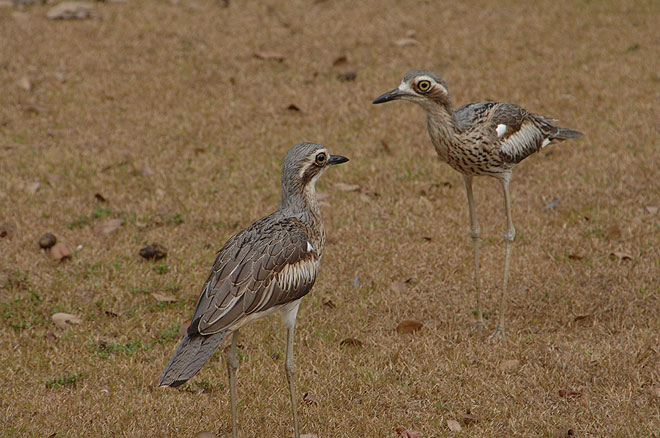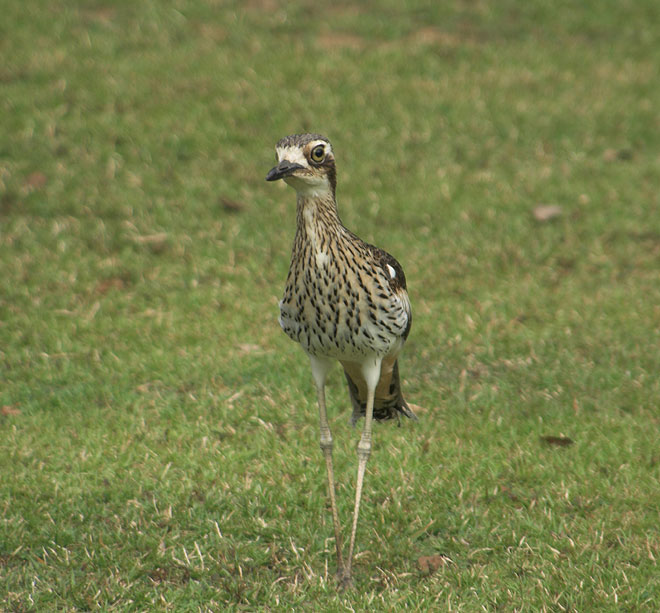In the open forests and woodlands of Australia, particularly in the north, there roams a long legged, ground dwelling bird called the Bush Stone Curlew. Occupying a similar ecological niche as the North American roadrunner, this golden eyed bird is both a graceful and beautiful creature.
Its chilling wail is commonly heard at night, and you could be excused for not connecting the unusual call with this strange bird.

Essentially a carnivore, the Bush Stone Curlew is also a nocturnal animal that’s quick enough to eat the likes of frogs, spiders, insects, molluscs, crustaceans, snakes and lizards. It subsists mostly near watercourses or swamps, tends to stay within a territory of around 10-25 hectares, and particularly likes to forage on moonlit nights.
During the day, this deft little land predator will hide, squatting in the grass, either alone or in small groups. When threatened, it will sit motionless in strange looking postures, which works well with humans, but not when confronted by animals that hunt by scent, such as dingos or goannas.
Although primarily a swift and agile runner, the Bush Stone Curlew is known to fly at the night, with its airborne motion being both rapid and direct, propelled by its long wings.

In reproduction, the female Bush Stone Curlew typically lays two eggs in a ground nest that incubate over a period of 28 days. When its nest is threatened, the curlew may display its high and broad wings in an impressive threatening posture while emanating a loud hissing noise, which sounds much like a kettle firing short rapid bursts.
Being a particularly common sight in North Queensland, guests at Thala could well spot this knobbly kneed sprinter, fleeing under a moonlit night towards a most unfortunate creature. Or maybe you’ll be lucky enough to see one by day, where it could resemble an odd looking statue that’s been forgotten amongst the tall grass.
